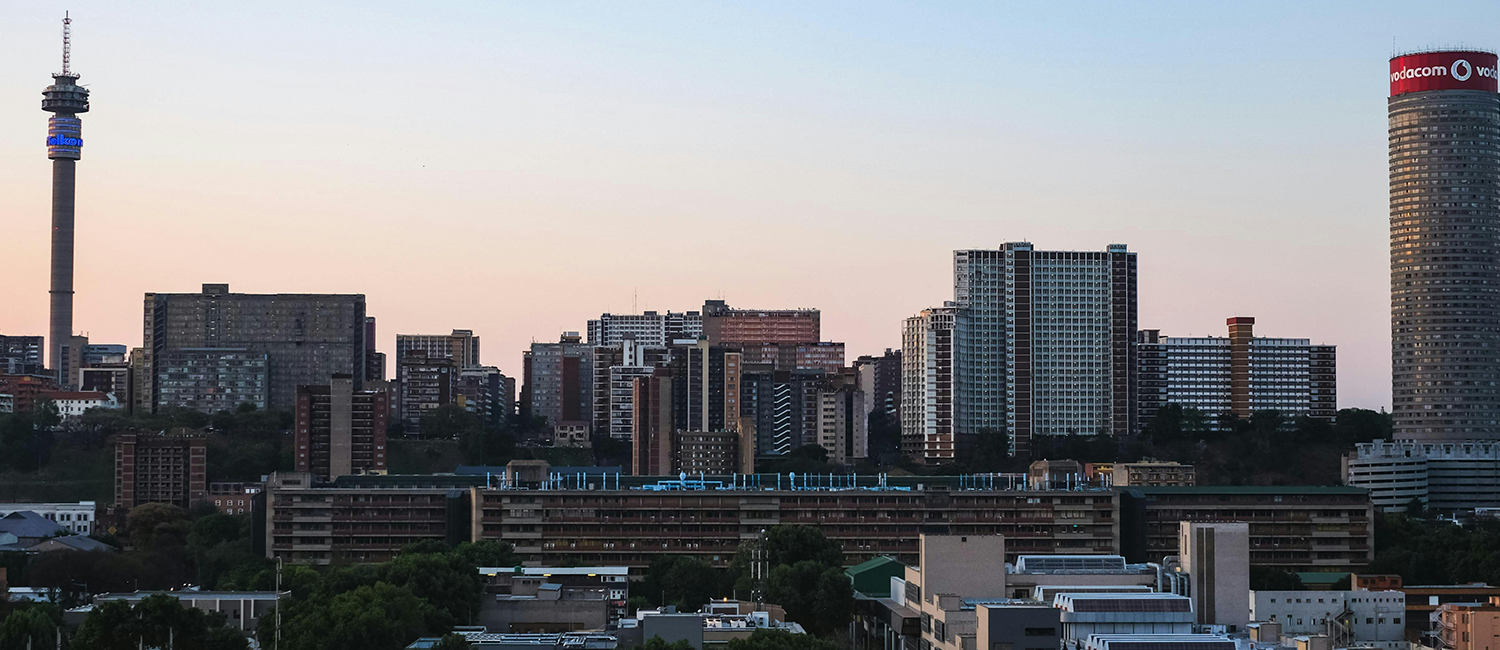The City of Johannesburg’s vision of Braamfontein as a creative entrepreneurial precinct is being realized, Development Planning MMC Roslynn Greeff told participants at a workshop to discuss the future of the inner city suburb.
Art commissioned for Braamfontein alley waysCraig Smith’s ‘The Guardians’, one of number of artworks commissioned by the JDA/BID as part of their upgrade of Braamfontein alley ways. (Photo: www.braamfontein.org.za)At the same time, she said, the area had, organically, become home to families as well as a space where young people were being prepared to enter the workplace.
“Braamfontein has become a retail, commercial, residential and academic zone. The City’s encouragement of development and investing in programmes like BRT routes have created linkages between the commercial and academic spheres.”
The workshop, hosted by the Johannesburg Development Agency (JDA), took place at the Lamunu Hotel in Braamfontein on 31 July, and featured presentations by Braamfontein Improvement District chairperson Andre Oberholzer, the director of Wits University’s Braamfontein Revitalization Project, Taffy Adler, and property developers Ndumiso Davidson and Adam Levy.
Krishni Gounden of the City of Joburg’s Inner City Office also spoke about City initiatives in the area.
Over the last decade, Braamfontein has become a successful, connected mixed-use district that has helped to arrest urban decay in Johannesburg’s inner city and made the area more welcoming to families and businesses.
Much of this success has been due to partnerships between the City and business on various initiatives, such as the Braamfontein Improvement District, with which the JDA has been closely involved since it came into being in 2004.
NEW CHALLENGES TO BE OVERCOME
However, the workshop heard, the success of these partnerships has thrown up new challenges that will need to be addressed for growth to continue uninterrupted in Braamfontein.
The Braamfontein Improvement District (BID), for example, was originally created to encompass the corporate zone in Braamfontein, where the BID provides security and cleaning services in public spaces and streets.
Andre Oberholzer of the BID believes the City now needs to expand the boundaries of the BID to include the geographic entirety of Braamfontein. The success of the BID, he said, had encouraged economic activity outside of its boundaries, and the City needs to extend these benefits to the whole community.
“Braamfontein is multiple communities working together, and the BID needs to reconnect to the well-woven social fabric of the area.”
The BID’s services, he said, had made some parts of Braamfontein more welcoming and secure than others. For this to be equalized, certain legislative constraints needed to be overcome.
Developer Adam Levy, whose company Play Braamfontein started the Neighbourgoods Market and has led in the gentrification of the area, told the workshop that the City’s quality of life statutes made it more difficult than it should be, to operate entertainment venues in Braamfontein.
There was in this regard a disconnect with the City’s ambitions for redeveloping the inner city, Levy said, adding that leisure venues were needed in the area, but that the arduous licencing process and harassment by low-level officials made for a difficult business environment.
HARNESSING BRAAMFONTEIN’S YOUTHFUL ENERGY
Levy’s sentiments were echoed by Ndumiso Davidson, CEO of property company Southpoint, which has a large footprint in Braamfontein, mostly in student accommodation, but is also beginning to develop office space in the area. Its newest project is the renovation of the Heerengracht building, renamed 87, to house NGOs and small creative industry firms.
Davidson reeled off a list of numbers – approximately 50 000 people work in Braamfontein, 25 000 call it home, and 30 000 students pass through it on the way to and from university – to highlight the scale of opportunity for anyone looking to develop in the area.
“We have 5 000 students living in our buildings,” Davidson said. “These are kids from around South Africa and around the world drawn to this ‘Capital of Cool’. The attraction is they can live, study and play in one compact part of the city. Harnessing this youthful energy is the way forward.”
In her closing remarks, Councillor Greef said that the time was clearly ripe to build on the success that partnerships between business and the City had made of Braamfontein. “This is an exciting moment in time for Johannesburg,” she said.

